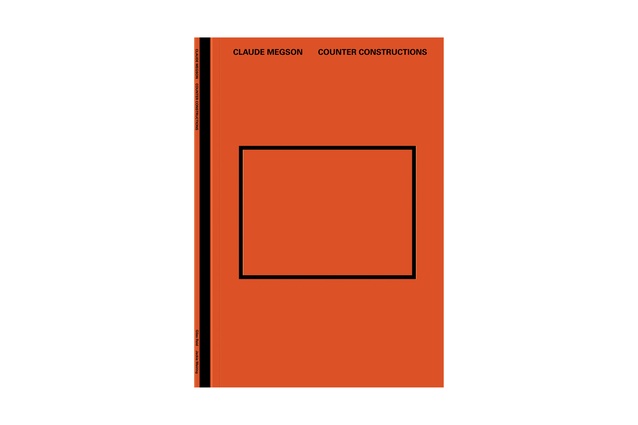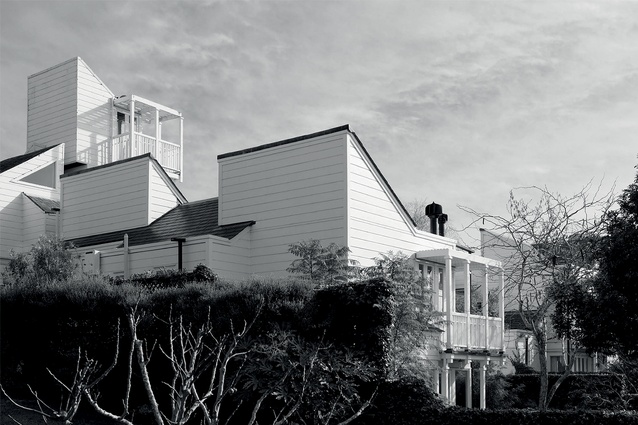Book review: Claude Megson: Counter Constructions
Dr. Andrew Barrie reviews Claude Megson: Counter Constructions by Giles Reid, with photography by Jackie Miering.
Architectural publishing in New Zealand has taken a major step up since the new millennium, with substantial books now available about many of our current leading firms. We have been provided with monographs on Architectus, Pete Bossley, Jasmax, Warren and Mahoney, Athfield Architects and many others.
However, with this escalation in output being a relatively recent phenomenon, publication on architecture that predates the book boom is still comparatively sparse. The work of the architects of previous generations is no longer plugged into the economic and organisational power needed to support a publication.
Until this work ignites the passion of an academic or writer, it will remain accessible only through mentions in our history texts or perhaps one of the slim exhibition catalogues that, until a short time ago, were the most typical form of Kiwi architectural monograph.
Fortunately, we seem to be working slowly backwards, filling these gaps. A Peter Beaven book was recently published, the stuttering project for a John Scott publication seems finally to have gained traction, and a Gummer and Ford title is apparently in the works. A book on the work of Claude Megson has now appeared, published by Giles Reid.
Reid produced astute and sometimes biting commentary on New Zealand architecture through the 1990s and 2000s, though his written output slowed during a long stint on Renzo Piano’s staff; he is now practising under his own banner in London.
Megson was felled by cancer in 1994 at the age of just 57, having designed only 40 projects. He was a passionate but not uncomplicated character; he inspired as much antipathy as admiration. Perhaps for this reason, he has been largely omitted from our history books.
Megson’s best houses, however, are among the most exciting ever produced in New Zealand, and his influence on local architecture was amplified by nearly 30 years of teaching at the University of Auckland. Reid was among the last generation of students to be taught by Megson and, in 1996, completed an undergraduate thesis on his output.
Reid has focused the book on five of Megson’s houses from the mid-1970s, when he was at the height of his powers. The selection includes his best-known works: the Cocker Townhouses in Freeman’s Bay, the Norris House in Remuera (both recipients of NZIA Enduring Architecture Awards) and the Barr House in Meadowbank.
The book is introduced by a fast-moving but insightful essay by Reid, who looks at four themes in Megson’s work. The bulk of the book is a newly-shot photo essay of the five houses by Jackie Meiring. The full-page and double-page photos capture the formal and programmatic sophistication of Megson’s work: deeply concerned with the rituals of domestic life – orientation, comfort, amenity – but also highly sculptural, spatially thrilling and adventurous.
Lodged between the text and photos is a fascinating selection of Megson’s beautiful drawings, ranging from initial sketches and interior perspectives to presentation axonometrics and construction drawings.
The terror for any writer on Kiwi architecture is that our small audience means that – unless you are writing about Futuna Chapel – there can only be one book on any given subject, so it had better be a good one. Is this the Megson book we might hope for? Given Megson’s vivid personality, it would have been easy to fill the book (and this review) with entertaining anecdotes about the projects and the man who drove them. Instead, Reid concentrates on the work.
Working with a comparatively slender 72 pages, and with most images occupying at least a full page, Reid was wise to have focused on a small number of projects. The book’s large format gives the images and drawings room to breathe. Megson’s handling of space and material was incredibly intricate and, to aid understanding, it would have been useful to have plans of every project.
However, Megson’s work is allowed to speak for itself – every drawing is from his hand and every photo is of his work. Reid argues that the houses “illustrate a deeply-held philosophy”. The drawings, analytical text and Meiring’s lush photography convey both this thinking and Megson’s formal mastery. “Even today,” Reid states, “more than two decades after [Megson’s] death, his architecture remains striking in its originality.”
This astute book fills a lamentable gap in our written architectural history and returns to prominence one of our most intriguing architects.
Claude Megson: Counter Constructions can only be purchased from www.counterconstructions.com and costs NZ$69.95 including postage from UK.











